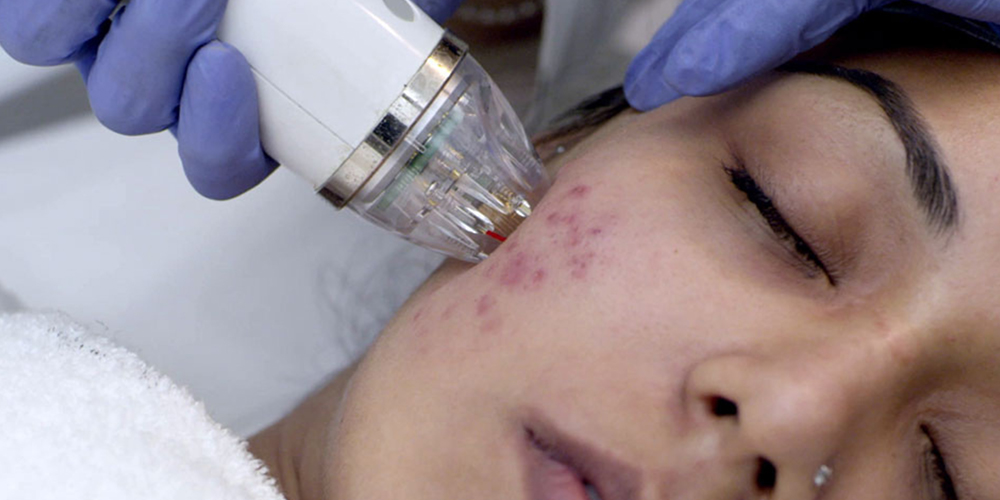- +91 97727 60561
- info@drdhabhai.in
- Wed - Sat: 5 PM - 8 PM Sunday Off

Acne is a skin condition that occurs when your hair follicles become plugged with oil and dead skin cells. It causes whiteheads, blackheads, or pimples. Acne is most common among teenagers, though it affects people of all ages.
Effective acne treatments are available, but acne can be persistent. The pimples and bumps heal slowly, and when one begins to disappear, others seem to crop up.
Depending on its severity, acne can cause emotional distress and scar the skin. The earlier you start treatment, the lower your risk of such problems.
Acne signs vary depending on the severity of your condition.
See your primary care doctor if self-care remedies don’t clear your acne. They can prescribe stronger medications. If acne persists or is severe, you may want to seek medical treatment from a doctor who specializes in the skin (a dermatologist or pediatric dermatologist).
For many women, acne can persist for decades, with flares common a week before menstruation. This type of acne tends to clear up without treatment in women who use contraceptives.
A sudden onset of severe acne in older adults may signal an underlying disease requiring medical attention.
The Food and Drug Administration (FDA) warns that some popular nonprescription acne lotions, cleansers, and other skin products can cause a severe reaction.
This type of reaction is rare, so don’t confuse it with redness, irritation, or itchiness in areas where you’ve applied medications or products.
Seek emergency medical help if, after using a skin product, you experience the following: Faintness, Difficulty breathing, Swelling of the eyes, face, lips or tongue.
Acne typically appears on your face, forehead, chest, upper back, and shoulders because these areas of skin have the most oily (sebaceous) glands. Hair follicles are connected to the oil glands.
The follicle wall may bulge and produce a whitehead. Or the plug may be open to the surface and darken, causing a blackhead.
A blackhead may look like dirt stuck in pores. But the pore is congested with bacteria and oil, which turns brown when exposed to the air.
Pimples are raised red spots with a white centre that develop when blocked hair follicles become inflamed or infected with bacteria.
Blockages and inflammation deep inside hair follicles produce cystlike lumps beneath the surface of your skin. Other pores in your skin, which are the openings of the sweat glands, aren’t usually involved in acne.
Androgens are hormones that increase in boys and girls during puberty and cause the sebaceous glands to enlarge and make more sebum. Hormone changes during midlife, particularly in women, can lead to breakouts, too.
Certain medications. Examples include drugs containing corticosteroids, testosterone, or lithium.
Studies indicate that consuming certain foods—including carbohydrate-rich foods like bread, bagels, and chips—may worsen acne.
Further study is needed to examine whether people with acne would benefit from following specific dietary restrictions.
Stress doesn’t cause acne, but if you already have it, it may worsen.
Chocolate and greasy foods. Eating chocolate or greasy food has little to no effect on acne.
Acne isn’t caused by dirty skin. Scrubbing the skin too hard or cleansing with harsh soaps or chemicals irritates the skin and can worsen acne.
Cosmetics don’t necessarily worsen acne, mainly if you use oil-free makeup that doesn’t clog pores (noncomedogenic) and remove makeup regularly. No, cosmetics don’t interfere with the effectiveness of acne drugs.
People with darker skin types are more likely than people with lighter skin to experience these acne complications:
Pitted skin (acne scars) and thick scars (keloids) can remain long-term after acne has healed.
After acne has cleared, the affected skin may be darker (hyperpigmented) or lighter (hypopigmented) than before.
People of all ages can get acne, but it’s most common in teenagers.
Such changes are common during puberty or pregnancy.
Genetics plays a role in acne. If both of your parents had acne, you’re likely to develop it too.
You may develop acne when your skin comes into contact with oil or oily lotions and creams.
Telephones, cellphones, helmets, tight collars, and backpacks can cause this.